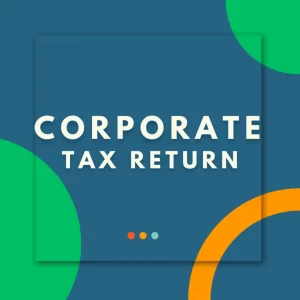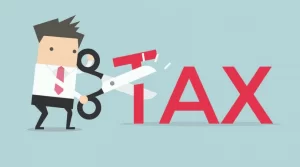Driving for Uber or Lyft is one of the most flexible jobs in Canada. Whether it’s your full time job, part-time gig, or an occasional source of side income, the rules around taxes for rideshare income are quite specific. Here are the (tax) rules of the road and Tax tips for Uber Drivers in Canada.
Key Takeaways
- If you work for a ridesharing app like Uber and Lyft, all your earnings are taxable, and it’s recommended you put 25% of your income aside for the taxman.
- Driving for a rideshare app requires you have a GST/HST number from Day One.
- Being a driver for a rideshare app has different tax implications than being a courier for a food delivery service. Understanding the difference upfront can help reduce headaches and penalties at tax time.
Do Uber and Lyft Drivers Pay Taxes?
Contrary to popular belief, yes they do. When you’re a driver for a ridesharing company, you’re considered an independent contractor, not an employee, of the company. This means the company doesn’t withhold taxes from your income on your behalf and means you’ll need to report money you make from rideshare driving as self-employment income.
How Much Taxes Do Uber Drivers Pay?
It’s recommended you set aside at least 25% from your net business earnings (not the gross amount) for taxes owing.

Step By Step Guide on How to File Income Taxes as a Ride-Share Driver
What If You Deliver for an Online Food Ordering Company like Uber Eats or SkipTheDishes?
The Canada Revenue Agency (CRA) looks at being a ‘courier’ for a food delivery app and being a ‘driver’ for a ride sharing app as two different business activities, so the tax reporting requirements differ for each. If you’re classified as a courier, you’re in luck: GST/HST registration is not necessary until your income surpasses $30,000.
What Information Do Lyft and Uber Drivers Need to File Taxes?
To report your income to the Canada Revenue Agency (CRA), complete and submit Form T2125 – Statement of Business or Professional Activities along with your tax return.
To do this, you’ll need to gather the following information:
- Your annual tax summary from the rideshare company (or companies) that you work with
- Receipts, bills, and statements for all of your tax-deductible expenses
- Your total vehicle mileage for the year as calculated from the odometer reading at the beginning of the year and the odometer reading from the end of the year
- The number of kilometres that you drove for business use and personal use
- Your Social Insurance Number (SIN)
- Your GST/HST number (business number)
- Any other tax documents and receipts that are related to your employment as a rideshare driver (e.g. any amount of tips you’ve made)
What Expenses Can Uber and Lyft Drivers Claim?
Deductible expenses are what helps lower your tax owing, so be sure to claim all your eligible costs – not all of which are obvious. These include:
- App Fees (including service fees, booking fees and other fees such as airport, city or split fare fees)
- Gas, oil, windshield washer fluid, brake fluid, antifreeze and other maintenance expenses
- Repairs and routine oil changes
- Tires (including the cost of balancing/installation)
- Lease payments
- Car washes/detailing
- Supplies such as pens/paper
- A portion of cell phone expenses
- Capital cost allowance (CCA) on the vehicle
Do Rideshare Drivers Have to Charge and Claim GST/HST?
Ridesharing drivers are subject to the same Goods and Services Tax/Harmonized Sales Tax (GST/HST) regulations as taxi operators, which means every dollar of their income is subject to GST/HST.
In addition to registering for a GST/HST number, rideshare drivers are required to charge, collect, report and remit GST/HST on every fare. These requirements apply no matter how much – or little – income you earn from ridesharing.
The amount of GST/HST you need to charge on fares varies by province. For example, the GST/HST rate in Ontario is 13%. You can view the current list of provincial GST/HST rates here.
The Quick Method to calculate GST/HST
Your other option in the Quick Method. Rather than collecting receipts and then adding the total GST/HST collected and subtracting any ITCs, the Quick Method is a simple calculation based on “total taxable supplies” (For ride-share partners/drivers, total taxable supplies is the total amount of gross fares.)
Using the Quick Method, no specific ITCs are claimed. Instead, the payment rate applied is lower than the GST/HST charged and collected by the partner/driver. Because the rate of GST/HST charged varies by province, so do the Quick Method rates. Ontario, for example, has a Quick Method rate of 8.8%. The Quick Method rate in Alberta is 3.6%. All provincial Quick Method rates can be found on CRA’s Quick Method Rates page.
Example:
- A ride-share partner/driver in Ontario has total (gross) fares during the reporting period of $10,000.
- The GST/HST rate in Ontario is 13%, so $1,300 was charged and collected during the reporting period. Using the Quick Method rate for Ontario of 8.8%, the partner/driver is required to remit net tax of $994.40. ($10,000 + $1,300) X .088 = $994.40
Contact Abdullah CPA for Uber Tax Filling






